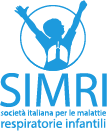Childhood interstitial lung diseases (chILD) represent a heterogeneous group of rare respiratory disorders that affect the pediatric population and can lead to pulmonary fibrosis. While fibrosis is a leading cause of death in adults with interstitial lung diseases (ILD), it is less common in children, with clinical data still limited and few prospective systematic studies. Registries suggest that many patients diagnosed with chILD continue to have potentially progressive or fibrosing disease into adulthood. There is a need for improved knowledge of chILD among pulmonologists to optimize the transition of care from pediatric to adult facilities. These conditions, often of genetic origin, present significant diagnostic and therapeutic challenges due to the difficulty in recognizing disease progression and implementing timely and effective treatments. For healthcare professionals, it is essential to gain a thorough understanding of pulmonary fibrosis in children, comprehend the underlying pathological mechanisms, and be aware of available treatment options, as well as actively contribute to the development of guidelines for managing this complex condition from childhood to adulthood.
Pulmonary Fibrosis in Children: Definition and Diagnosis
Pulmonary fibrosis is histopathologically defined as an abnormal accumulation of collagen and fibroblasts that leads to the loss of functional tissue for gas exchange, with consequent remodeling of the lung parenchyma. In children, radiological signs of fibrosis include traction bronchiectasis, bronchioliectasis, and the characteristic “honeycombing” pattern on chest CT. However, diagnosing pulmonary fibrosis in children is complex: ongoing lung development during infancy, combined with the difficulty of performing respiratory function tests in children under 6 years of age, makes it challenging to monitor and identify early decline in pulmonary function. The definition of progressive fibrosis in children is still under study, with criteria differing from those applied to adults.
In many cases, fibrosis develops slowly, but in certain genetic diseases, such as those related to mutations in the ABCA3 or SFTPC genes, it can progress more rapidly. While some children may resolve the disease without persistent symptoms, others may experience chronic inflammation leading to pulmonary fibrosis. This makes the management of chILD particularly challenging, as there is still no universally accepted clinical protocol for identifying and treating pulmonary fibrosis in pediatric patients.
Parenchymal Disorders and Genetic Causes of chILD
Genetic diseases are among the leading causes of chILD. Mutations in the ABCA3 gene, a surfactant transporter, and in the SFTPC gene, a surfactant protein, are among the most common and are associated with respiratory disorders ranging from neonatal respiratory distress syndrome to chronic pulmonary fibrosis that can manifest in adolescence or even adulthood. ABCA3 deficiency, in particular, is often associated with severe interstitial lung disease that may worsen with age, leading to pulmonary fibrosis in some cases.
Other genetic disorders, such as the SP-C dysfunction syndrome, cause the formation of ground-glass opacities on chest CT in neonates and can progress to chronic pulmonary fibrosis. Managing these patients requires a multidisciplinary approach, including accurate genetic diagnosis, continuous monitoring, and targeted treatments, which may include the use of immunosuppressive therapies or anti-inflammatory drugs.
Systemic Diseases and Pulmonary Fibrosis in Children
Systemic diseases can also significantly impact the pulmonary health of children, with a predominant pulmonary phenotype often presenting initially in some cases. Disorders such as systemic lupus erythematosus (SLE), juvenile dermatomyositis (JDM), and juvenile systemic sclerosis (jSSc) are frequently associated with interstitial lung disease in children, leading to pulmonary fibrosis. Early diagnosis and prompt treatment are essential to reduce mortality and morbidity, as well as to prevent irreversible lung damage.
Treatment Options and Future Directions
The treatment of fibrosing chILD in children is still in development, with few randomized controlled clinical trials supporting clinical practice. Management of these patients focuses on supportive treatments such as supplemental oxygen, assisted ventilation, and psychosocial support, as well as immunosuppressive drugs, such as mycophenolate mofetil and rituximab, which are used in some forms of chILD related to autoimmune diseases.
A recent phase II study tested the efficacy of hydroxychloroquine in children with fibrosing chILD, but the results were not sufficient to consider this drug a standard treatment. However, other agents, such as nintedanib, have shown good safety and tolerability responses, with some signs of improvement in forced vital capacity, suggesting that promising developments may emerge in this area.
Toward Early Diagnosis and Personalized Treatments
Research on pediatric interstitial lung diseases is making significant progress, but many challenges remain, particularly in defining standardized diagnostic criteria and identifying effective treatments for progressive pulmonary fibrosis. It is essential for healthcare professionals, especially pediatric pulmonologists, to gain greater awareness of the genetic and clinical implications of chILD, ensuring that children receive timely diagnoses and appropriate treatments.
The future of research is focused on personalized therapies, such as cyclosporine A for ABCA3 mutations, and innovative approaches like gene therapy and induced pluripotent stem cell (iPSC) technology, which may hold the key to developing new treatments for monogenic lung diseases. Ongoing efforts are needed to improve understanding of pulmonary fibrosis in children, offering better quality of life and more promising therapeutic prospects for these young patients.
In conclusion, the treatment of pediatric interstitial lung diseases requires an integrated approach that includes early diagnosis, advanced clinical management, and involvement in innovative research studies. Only through collaboration between pediatricians, pulmonologists, and researchers can we improve the treatment and prognosis for these young patients, ensuring a smooth transition of care from pediatric to adult services.
No metadata found.



